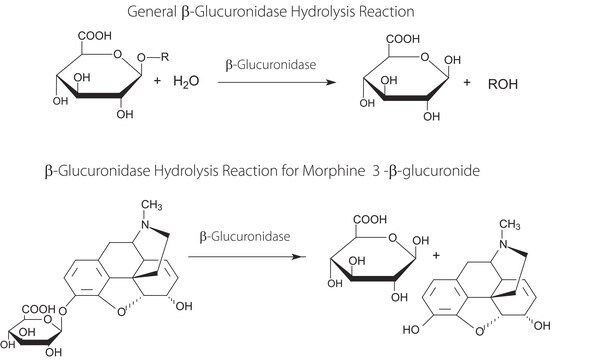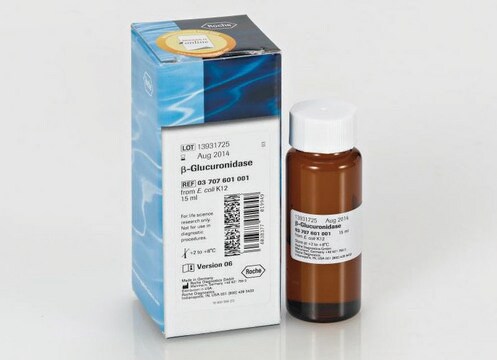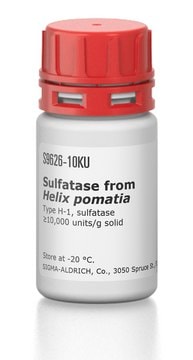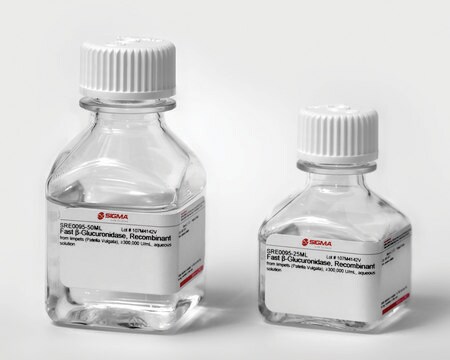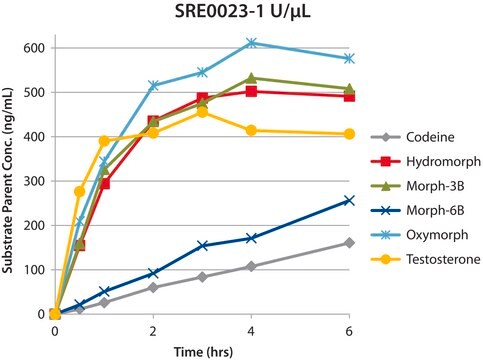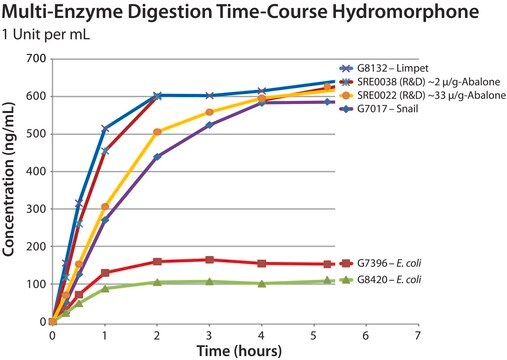G8162
ββ-Glucuronidase from Escherichia coli
aqueous glycerol solution, ≥5,000,000 units/g protein, pH 6.8 (biuret)
Synonyme(s) :
ββ-D-Glucuronide glucuronosohydrolase
About This Item
Produits recommandés
Source biologique
Escherichia coli
Niveau de qualité
Forme
aqueous glycerol solution
Activité spécifique
≥5,000,000 units/g protein, pH 6.8 (biuret)
Poids mol.
69-71 kDa
Conditions d'expédition
wet ice
Température de stockage
−20°C
Vous recherchez des produits similaires ? Visite Guide de comparaison des produits
Description générale
Application
The optimal conditions for the enzymatic hydrolysis of α-hydroxytriazolam, one of the major metabolites of triazolam in human urine, were determined using β-glucuronidase Type IX-A.
It is used as a reporter gene in GUS assays to monitor gene expression.
En savoir plus
sur les données d′applications récentes générées par la R&D Sigma pour optimiser l′hydrolyse de différentes classes de médicaments à l′aide d′enzymes provenant de diverses sources et sur l′utilisation d′une enzyme purifiée par chromatographie pour réduire l′effet de l′activité estérase entraînant la conversion de 6-MAM en morphine
Actions biochimiques/physiologiques
Définition de l'unité
Forme physique
Produit comparable
Mention d'avertissement
Danger
Mentions de danger
Conseils de prudence
Classification des risques
Resp. Sens. 1
Code de la classe de stockage
10 - Combustible liquids
Classe de danger pour l'eau (WGK)
WGK 1
Point d'éclair (°F)
Not applicable
Point d'éclair (°C)
Not applicable
Faites votre choix parmi les versions les plus récentes :
Déjà en possession de ce produit ?
Retrouvez la documentation relative aux produits que vous avez récemment achetés dans la Bibliothèque de documents.
Les clients ont également consulté
Articles
β-glucuronidase (GUS) enzymes are utilized to hydrolyze glucuronide (gluc) drug metabolites to the parent drug, facilitating analysis by LC-MS/MS.
Today, diverse studies report the benefits of probiotics, such as inhibitory effects on pathogens, aid in the management or prevention of chronic intestinal inflammatory diseases or atopic syndromes, and support to the immune system. Potential beneficial applications abound, researchers continue to evaluate the effictiveness and clarify the mechanisms of action of probiotics.
Protocoles
Enzymatic Assay of β-Glucuronidase (EC 3.2.1.31) from E. coli
Notre équipe de scientifiques dispose d'une expérience dans tous les secteurs de la recherche, notamment en sciences de la vie, science des matériaux, synthèse chimique, chromatographie, analyse et dans de nombreux autres domaines..
Contacter notre Service technique